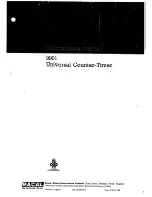
- 1 -
SYSTEM 600
GENERAL MAINTENANCE
AND ADJUSTMENT GUIDE
If you follow a routine maintenance schedule your system 600 will give you years of
reliable service with a minimum of “down time”. This guide outlines the routine
maintenance and adjustment techniques used to service this equipment.
Cleaning the Note Acceptor Bill Track
Clean sensors are critical to good acceptance. The note acceptor bill path should be
cleaned on a regular basis. A quick “cleaning” once every two months will keep your
acceptor in proper form. To gain access to the bill path for cleaning or removal of a
jammed bill, perform the following steps:
1.
Release the upper track latch by pulling the latch handle towards the rear of the note
acceptor. Note the position of the latch so that you can confirm when it is closed
properly.
2.
Continue pulling the latch towards the rear of the acceptor until the upper track lifts
up enough to expose the bill path.
3.
Spray a small amount of glass cleaner directly onto a clean cloth. Gently clean both
the upper and lower sensor glass thoroughly. Inspect glass for cracks directly over
any of the sensors on the track assemblies.
4.
Using a soft brush or canned air, clean off the upper track being careful not to
displace any of the four track cells. The track cells are the optical components that
monitor the bill travel through the note acceptor.
5.
To return the track to the closed position, push down on the front of the track. The
latch is spring loaded and will automatically lock when the track is in the proper
position.
Upper track
Cells
Latch Handle
Front View
Figure 1.1




















